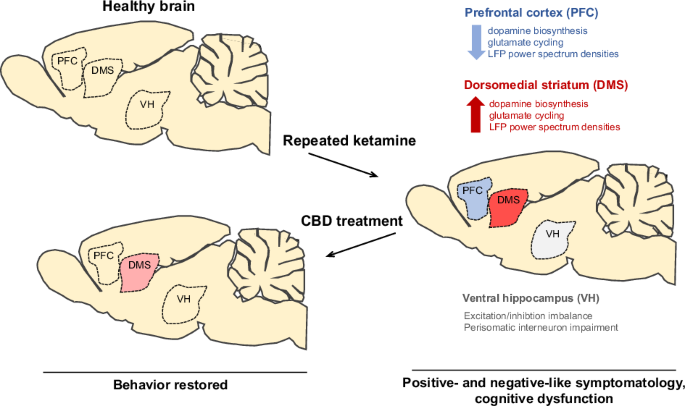
“Gulf War Illness (GWI) is a chronic disorder characterized by a heterogeneous set of symptoms that include pain, fatigue, anxiety, and cognitive impairment. These are thought to stem from damage caused by exposure under unpredictable stress to toxic Gulf War (GW) chemicals, which include pesticides, nerve agents, and prophylactic drugs.
We hypothesized that GWI pathogenesis might be rooted in long-lasting disruption of the endocannabinoid (ECB) system, a signaling complex that serves important protective functions in the brain.
Using a mouse model of GWI, we found that tissue levels of the ECB messenger, anandamide, were significantly reduced in the brain of diseased mice, compared to healthy controls. In addition, transcription of the Faah gene, which encodes for fatty acid amide hydrolase (FAAH), the enzyme that deactivates anandamide, was significant elevated in prefrontal cortex of GWI mice and brain microglia.
Behavioral deficits exhibited by these animals, including heightened anxiety-like and depression-like behaviors, and defective extinction of fearful memories, were corrected by administration of the FAAH inhibitor, URB597, which normalized brain anandamide levels. Furthermore, GWI mice displayed unexpected changes in the microglial transcriptome, implying persistent dampening of homeostatic surveillance genes and abnormal expression of pro-inflammatory genes upon immune stimulation.
Together, these results suggest that exposure to GW chemicals produce a deficit in brain ECB signaling which is associated with persistent alterations in microglial function. Pharmacological normalization of anandamide-mediated ECB signaling may offer an effective therapeutic strategy for ameliorating GWI symptomology.”
https://pubmed.ncbi.nlm.nih.gov/39241906/
“A mouse model for Gulf War Illness (GWI) displays deficits in brain anandamide.
Normalization of endocannabinoid signaling may offer a therapeutic strategy for GWI.”
https://www.sciencedirect.com/science/article/pii/S0028390824003113?via%3Dihub
“FDA-approved cannabidiol [Epidiolex®] alleviates Gulf War Illness-linked cognitive and mood dysfunction, hyperalgesia, neuroinflammatory signaling, and declined neurogenesis”
https://pubmed.ncbi.nlm.nih.gov/39169440/
“CBD formulation improves energetic homeostasis in dermal fibroblasts from Gulf War Illness patients. Our data provide new evidence that will validate the potential of cannabinoids as a therapeutic strategy to mitigate energy imbalance that may contribute to detrimental symptomatology (i.e., chronic fatigue, brain fog, cognitive dysfunction, etc.) in GWI patients.”

